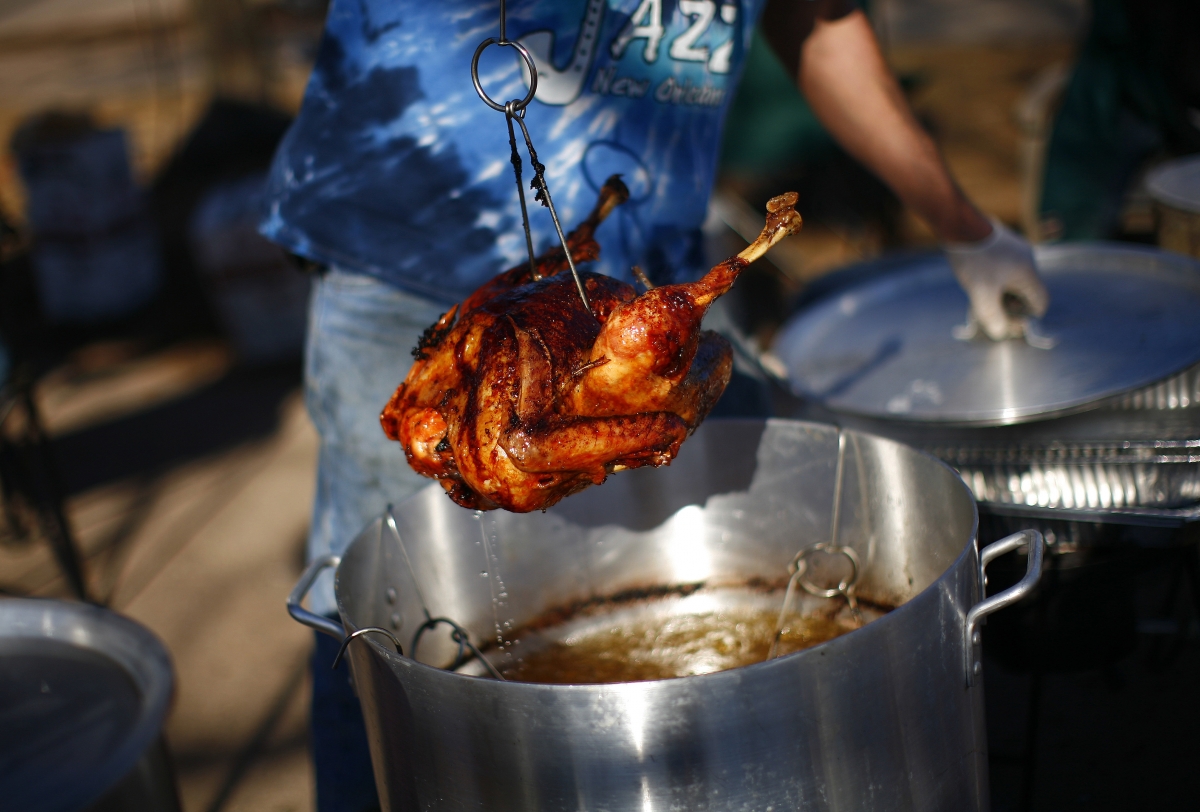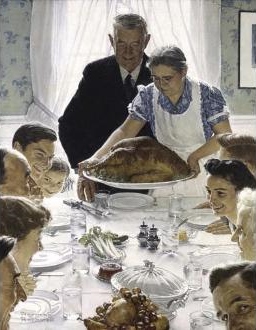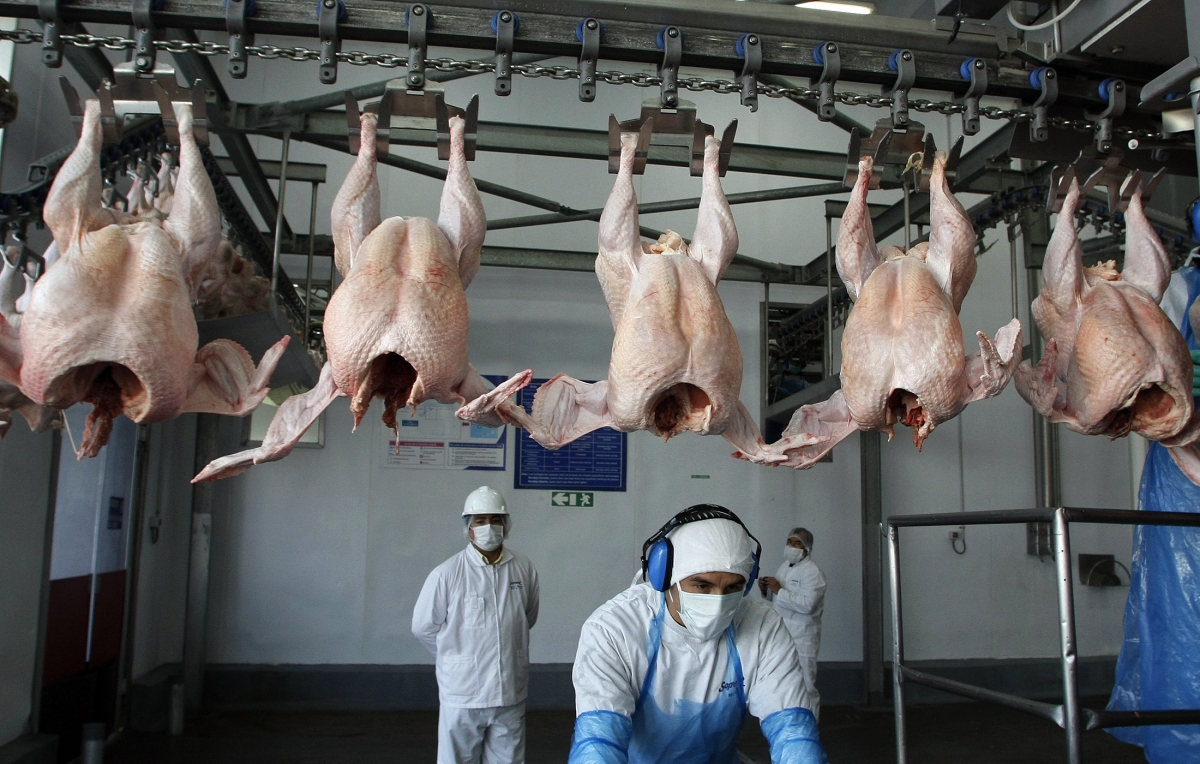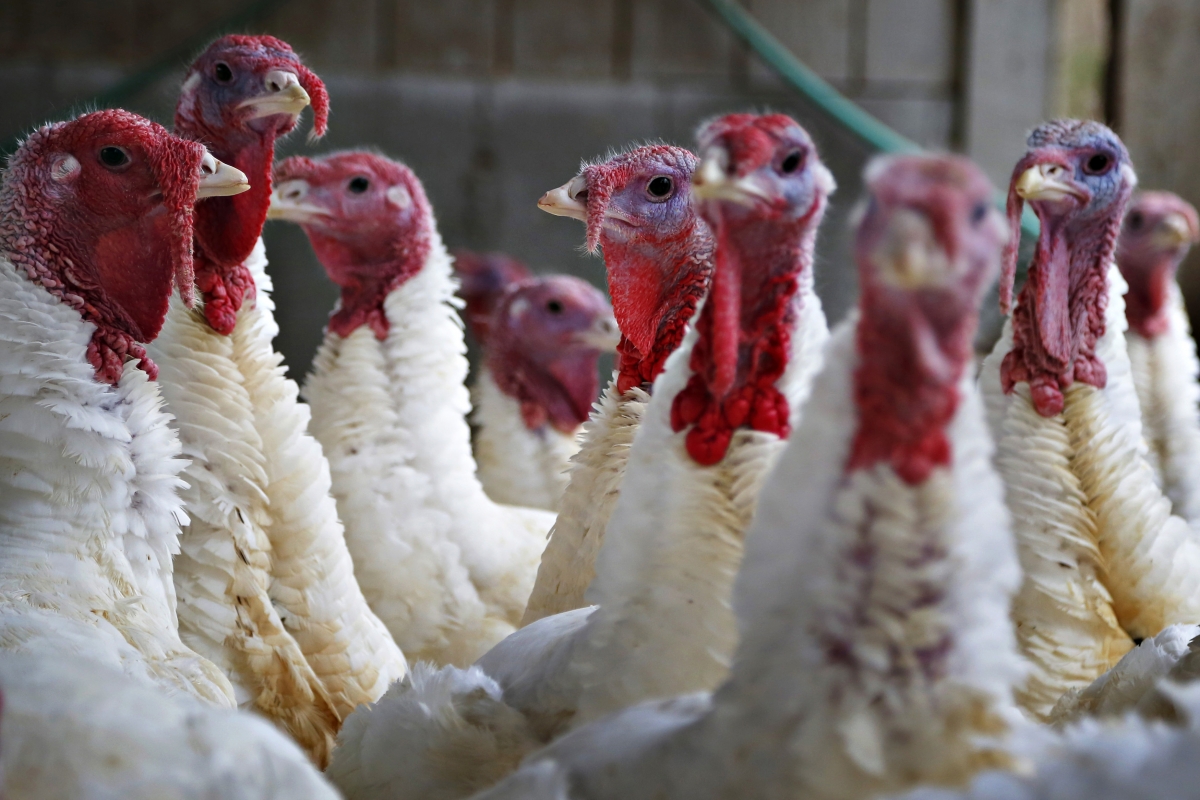Thanksgiving, a national holiday observed to give thanks for the year's best harvest, mainly in the United States and Canada, falls on 27 November this year.
The tradition of Thanksgiving, also called 'Turkey Day', is said to have begun in 1621 between the pilgrims and the Wampanoag at Plymouth Colony, when they came together and had turkey, fish, berries, waterfowl, venison, clams, lobster, fruits, squash and pumpkin. However, turkey has become the most important dish in the modern day Thanksgiving dinner menu.
History says that Alexander Hamilton, the founding father of the US, declared that no citizen of America should avoid turkey on the special day.
To mark the holiday, over 300 million Americans will celebrate Thanksgiving 2014 on Thursday, and an average American will eat over 3,100 calories on this special day, and 16 pounds of turkey per year.
According to National Turkey Federation, turkey demand has doubled in the last 30 years.
"In 2012, 800 million pounds were exported. Exports now comprise more than 13 percent of total turkey production, compared with 1.2 percent in 1990. In 2010, the top four export markets for U.S. turkey meat were Mexico (399.0 million pounds), China (82.9 million pounds), Hong Kong (37.9 million pounds) and Canada (22.7 million pounds)," reads the data on the site.
Interestingly, the prices of turkey are getting cheaper each year, making it an unavoidable dish on special days.
However, today's turkey birds bear little similarity compared to the ones in the 1930s. Until 1950s, the large birds in the genus of Meleagris were the same as their wild counterparts. But when an American poultry began to increase its operations, farmers focused on the size and speedy growth of the bird to meet the growing demand for the meat.
As a result, many of these birds are so big that they cannot stand upright and hold their weight. Due to their large size, male turkeys reportedly cannot transfer semen to hens, and these days, reproduction happens only through artificial insemination.
It has also been said that after farmers started to feed the birds in close quarters, they were given low doses of antibiotics to prevent them from infections. As a result, the birds became violent and even resorted to cannibalism.
While the size of the bird has evidently changed, how much of turkey can one really eat on Thanksgiving?
Experts say that an average man's stomach can be stretched to maximum capacity of one litre, but when a big meal is eaten, it is stretched a little more. Every time one swallows, a bit of air is also taken in, and the intestines are then filled with gases.
Apart from this, overeating will also make one sleepy. Turkey, which is low in fat and high in protein, iron, zinc, phosphorus, potassium and vitamin B, contains L-trypophan, an amino acid with sleep stimulating effect.
























